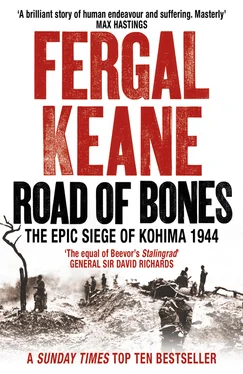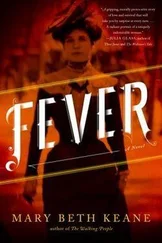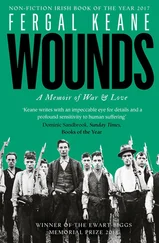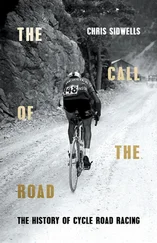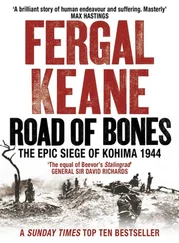Between 1942 and 1943 there had been several failed INA probes into British territory. † As 1943 drew to a close Mountbatten asked for an intelligence assessment of the INA. It was delivered to him on 13 November, with the instruction that henceforth the INA should, for ‘counter propaganda purposes’, be called JIFS – for ‘Japanese Inspired Fifth Columnists’ – an acronym designed to strip away the nationalist image of Bose’s army. The British also set up ‘josh’, or ‘enthusiasm or verve’, units to boost troop morale. The 750 josh groups were intended to ‘inculcate the doctrine that India must destroy the Japanese or be destroyed by them and to prepare Indian units for possible encounter with armed JIFS in the field’.
Propaganda broadcasts and leaflet drops were also stepped up, urging INA men to return to British lines where they would be treated fairly. But troops were told that if they encountered former comrades in the field they were to be shot if they did not surrender. General Slim would later say that some Indian units had to be restrained from shooting surrendering INA troops. Sepoy Gian Singh of 7th Indian Division heard Bose’s passionate calls for an uprising but was unmoved. ‘He promised to liberate India and said the Japanese were the friends of India. Not many truly believed him. Least of all us who saw the Japanese in their true colours. Much as we felt sorry for our brothers who had taken the salt but turned traitor even though they had an excuse. We often gave them no mercy.’
But the question of loyalty was nuanced. Soldiers of the 1st battalion, Assam Regiment were reminded of their duty of loyalty at josh sessions. Sohevu Angami, from the Naga village of Phek, listened to the propaganda about the INA and resolved to kill any of Bose’s men he came across. ‘We did what our officers told us to do and followed them. The Japanese and the INA were against the British and that made them our enemies. Did I really know what I was fighting for? No.’ Yet he had a sneaking regard for the INA leader. ‘I think his ideas were good. Even though we were opponents I came to respect him and what he was fighting for.’
In the case of many – perhaps most – soldiers, their loyalty was to their unit and not to the Viceroy or King Emperor. Indian officers did not as a rule feel that they were defending British overlordship, or that serving the Raj meant rejecting the ideals of Gandhi or Bose. A senior British civil servant at the War Department in Delhi wrote that ‘even those who were most convinced they had been right to go to Sandhurst and enter the King’s service saw it as a way to serve the independent India of the future … at the end of the war when the whole truth was known, many of the loyal Indian officers who would be the backbone of India’s new army felt some sympathy with those who had followed Bose.’ The growing realisation among officers and men that independence must come after the war tended to act as a brake on discontent. Major Ian Lyall Grant of King George V’s Own Bengal Sappers and Miners had fought alongside Indian officers since the retreat from Burma and was confident of their loyalty. ‘I remember saying that Independence was inevitably coming … I think it was generally known that we were on the way out … which made it much more difficult for them to hazard their lives on our behalf but they gave absolutely no sign of that to me.’
The Indian Army had also embarked on a transformation of its officer corps. * Discrimination in pay between Indian and British officers had been ended and, having started the war with only a thousand Indian officers, there were more than 6,566 by 1944. Although senior command positions were still overwhelmingly the domain of British officers, there were now Indian battalion and company commanders who gave orders to white subordinates.
Slim was an influential advocate of reform. ‘The fair deal meant’, he wrote, ‘no distinction between races or castes in treatment. The wants and needs of the Indian, African, and Gurkha soldier had to be looked after as keenly as those of his British comrade.’ However, Slim acknowledged that some of the newer British officers thought that all an Indian or African required was a ‘bush to lie under and a handful of rice to eat’. If paternalism had dominated the Indian Army of old, ignorance of culture and environment could be a hallmark of the younger officer class. Sepoy Gian Singh was crouching behind a small bush during a training exercise when he heard a hiss. A snake was lurking somewhere very close. Singh carefully backed away, only to see a deadly krait sitting where his head had just been. The training officer came up and began to harangue Singh:
‘What the hell are you up to,’ shouted the Captain coming up to me.
‘What’s all the fuss about such a small snake!’
‘That, Sir, is a krait,’ I replied.
He had to be told by a Subhadar that it was just as deadly as a .303 bullet. He shook his head in disbelief. That man had a lot to learn and little time to do so.
To many young British officers arriving in India the daily routines of Indian Army barracks life could seem little changed from a century before. On his first morning with 7/2 Punjab Regiment, Lieutenant John Shipster was woken by his bearer with a mug of sweet tea and a banana, and the salutation ‘Sahib, bahadur ji jagao ’ – ‘Mighty Warrior, arise’. ‘Servants were plentiful and one could live like a king on a pittance … For those in the army it was a sportsman’s paradise,’ he recalled. Shipster had arrived in India aged nineteen and fresh from Marlborough College. He was based at Meerut, headquarters of India’s most prestigious pig-stickers, the Meerut Tent Club, although Lieutenant Shipster’s forays on horseback were confined to the Ootacamund Foxhounds, chasing the indigenous jackal. The young officers wore tweed jackets and jodhpurs while the master and whips besported themselves in hunting pink. But Shipster was far from the stereotype of the ‘pukka’ young sahib. He walked the lanes of the poorer districts to practise his Urdu and on his first leave he went with his orderly, Khaddam Hussein, to stay at the man’s home. The two men hired a camel to carry their bags and walked to the village. ‘I wanted to see how they lived, and I liked my orderly, and I knew that there were some distinguished Indian Army officers living in the area, and I called on them and they all, without hesitation, invited us to a meal, usually a curried chicken or this or that, and I enjoyed the friendship.’
In late 1943 Shipster’s 7/2 Punjab were ordered to the Arakan as part of General Sir Philip Christison’s 15 Corps. By now Shipster was a captain with the temporary rank of major. Before they left, the officers were gathered together in an old cinema in Ranchi and given a rousing talk by their divisional commander. ‘It was nothing short of a call to war. It was brief, with flashes of humour and full of confidence … exciting and uplifting, but … it left me feeling apprehensive about the future.’
The Commander of 15 Corps was an old colleague of Slim’s, with whom he had taught at the Army Staff College between the wars. During the First World War Christison had been badly wounded at Loos and awarded the Military Cross. A keen shooting and fishing man, with a countryman’s eye for landscape and fauna, Christison revelled in the fecundity of the natural world in the Arakan. ‘Monkeys, gibbons, hornbills, woodpeckers and Scops owls were common and their eerie cries frightened many a Madrasi soldier and were extensively used by the Japs to communicate with each other. There were few snakes but one day a large python was brought into my headquarters. Inside was a barking deer which, contrary to belief, had been swallowed head-first.’ On occasion, clouds of butterflies appeared so that the ground seemed ‘as if it was shimmering’. Christison was particularly taken with the sight of wild orchids growing on rotting tree stumps. The general had a dangerous encounter with an elephant that pushed his jeep into a ravine when they met along a jungle track. Other soldiers could retell the cautionary tale of the young RAF officer who set off with a machine gun ‘to bag a “Tusker”’ but was found trampled to death.
Читать дальше
